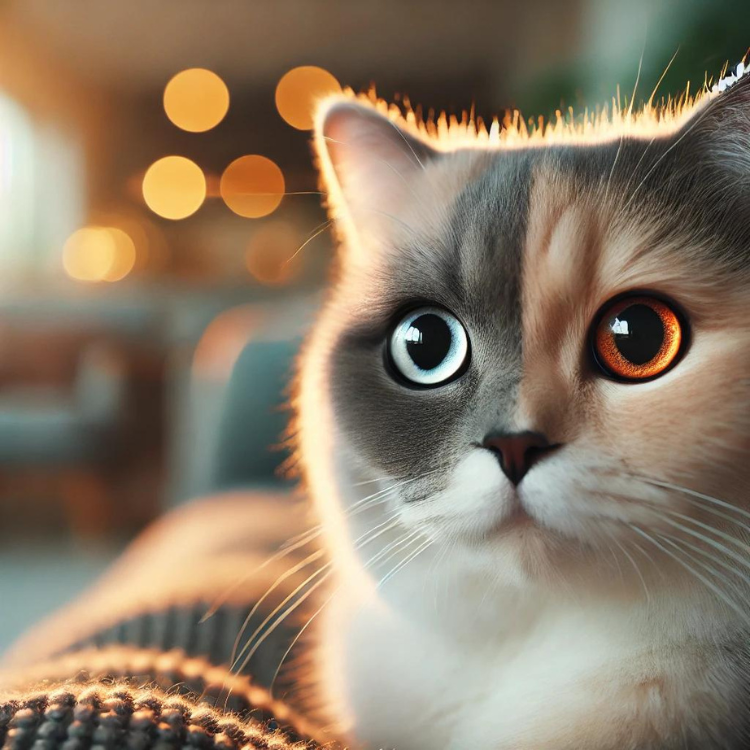Cat Eye Language Revealed: Decode Your Cat’s Emotions and Strengthen Your Bond

Cats have a unique way of expressing their emotions, and one of the most powerful tools they use to communicate is through their eyes. By learning to interpret your cat’s eye language, you can gain valuable insights into their emotional state and respond to their needs with greater understanding. In this guide, we’ll decode the various messages your cat’s eyes are sending, helping you build a stronger bond with your feline friend.
1. The Enchanting Gaze: Big, Watery Eyes
When your cat looks at you with wide, watery eyes, they’re likely feeling curious or intrigued. This can happen when they see something new or exciting, like a fluttering bird or their favorite treat. Cats often use this gaze to get attention, especially when they’re interested in food or play.
Tip: If your cat’s pupils are fully dilated and they seem nervous or start drooling, it may indicate stress or fear. Be mindful of your cat’s surroundings and remove any potential stressors to help them feel safe.
2. Calm and Relaxed: Normal-Sized Pupils
If your cat’s pupils are normal-sized and their gaze is soft, they’re likely feeling calm and content. This is the perfect time to offer gentle affection, like petting or cuddling, as they’re in a relaxed state. When your cat feels this way, it’s an ideal opportunity to reinforce positive behaviors and build trust.
3. Alert or Aggressive: Slit-Like Pupils
Slit-like pupils can indicate that your cat is on high alert, feeling aggressive, or uncomfortable. This eye shape often accompanies signs of stress or readiness to defend themselves. It’s best to give your cat some space when you see this, as pushing for interaction could lead to a defensive reaction, such as scratching or biting.
Pro Tip: If your cat’s pupils are narrow but their body language is relaxed, they might just be concentrating deeply on something. Always observe other cues, like tail position and ear movement, to get the full picture.
4. Scanning for Sounds: Ears and Eyes Working Together
Cats have excellent hearing, and you might notice their eyes and ears working together as they scan their environment for sounds. Their eyes may follow the movement of their ears, swiveling to locate noises. This behavior is a sign that your cat is alert, possibly feeling cautious or curious about their surroundings.
5. Eye Sensitivity: Why Cats See Better in the Dark
Cats have exceptional night vision due to the tapetum lucidum, a reflective layer in their eyes that amplifies low-light conditions. This allows them to hunt and navigate in the dark far better than humans can. Understanding this can help you create a comfortable environment for your cat, especially during their active nighttime hours.
6. Uneven Pupils: When to Be Concerned
If you notice that your cat has one pupil larger than the other, it could be a natural response to light changes or minor injuries. However, if this is accompanied by other symptoms like difficulty walking, behavior changes, or lethargy, consult a vet immediately, as it could indicate a more serious condition.
Conclusion: Understanding Cat Eye Language for a Deeper Connection
By learning to interpret your cat’s eye language, you can better understand their emotions and respond to their needs. From the calm assurance of normal pupils to the alertness signaled by narrow slits, your cat’s eyes offer valuable clues to their mood and well-being. Pay close attention to these signals, and you’ll strengthen your bond and ensure a happy, harmonious relationship with your feline companion.
Want to learn more about cat behavior and how to care for them? Click the link below to explore related articles. Read more articles
Looking for products for your cat or dog? Check out the articles linked below for more information and recommendations. Explore more articles
Discover our top recommended eBooks for expert tips on pet care. Click the link below to explore. Explore our eBooks